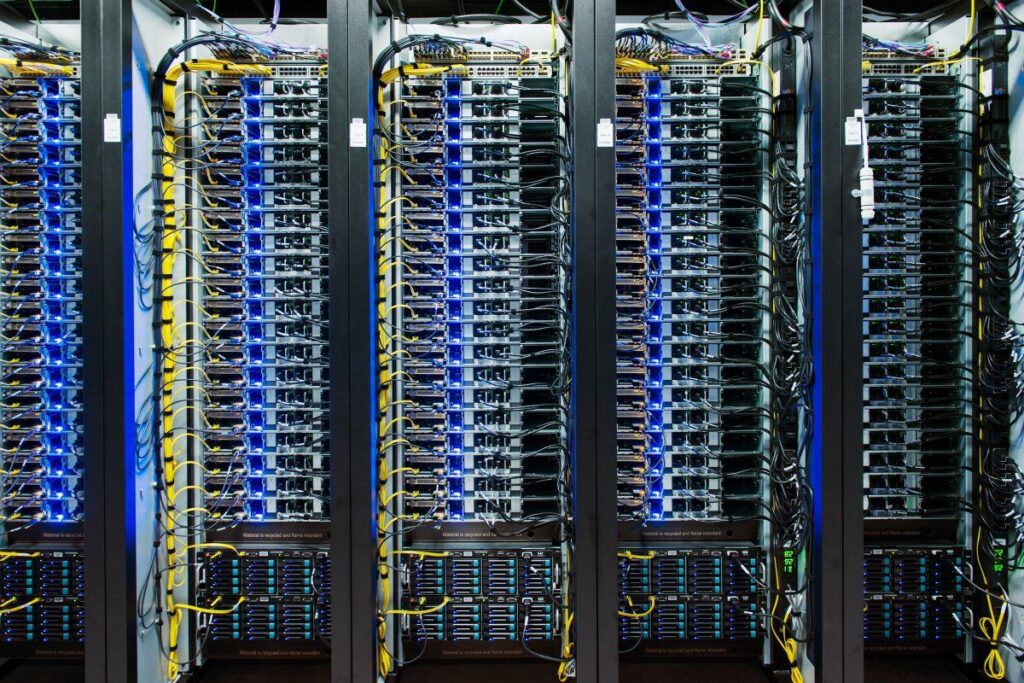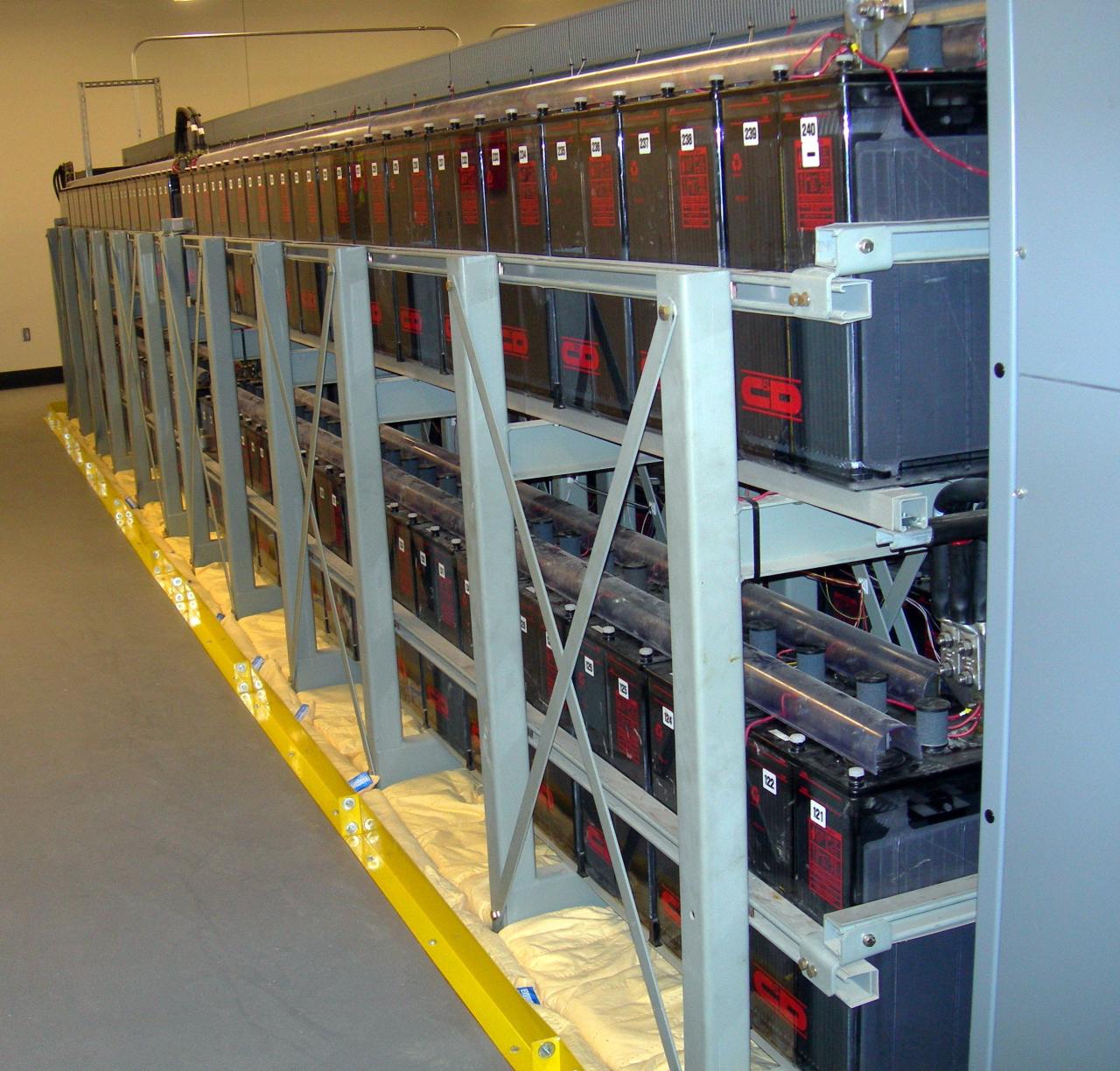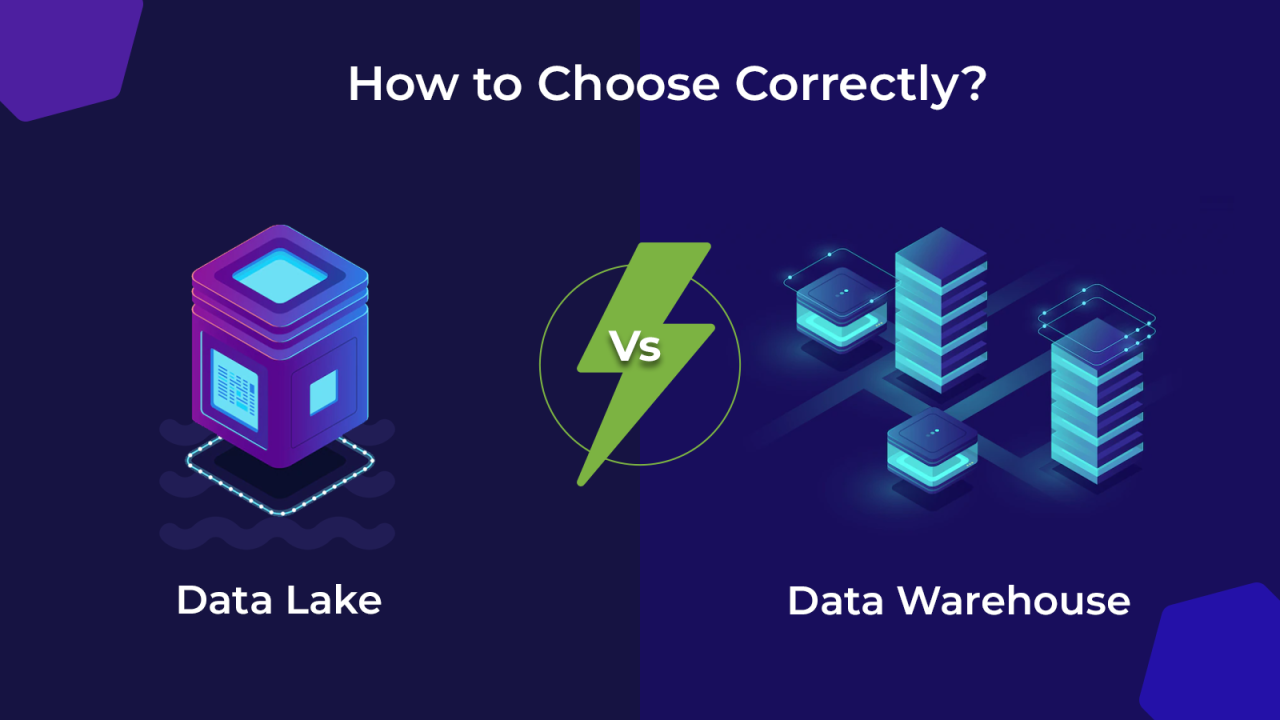In the ever-expanding universe of digital information, data is the new oil, driving insights, powering AI, and fueling global commerce. Yet, this explosion of data, from petabytes to zettabytes and beyond, presents an unprecedented challenge: how to store, manage, and access it efficiently, reliably, and cost-effectively. The answer lies in continuous storage innovations, a relentless quest to push the boundaries of capacity, speed, and intelligence in data management. Far from being a static, behind-the-scenes utility, modern data storage is a dynamic, cutting-edge field, undergoing revolutionary advancements that allow data to scale unimaginably, empowering enterprises and individuals to harness the true potential of their digital assets.
The Data Deluge: Why Storage Must Evolve
To truly grasp the critical importance and urgency behind storage innovations, it’s essential to understand the sheer scale and complexity of the data deluge we are currently experiencing.
A. Exponential Growth of Digital Information
The volume of data generated globally is not just growing; it’s accelerating at an unprecedented, almost incomprehensible rate.
- Ubiquitous Sensors and IoT: Billions of connected devices, from smartwatches to industrial sensors, smart cities to autonomous vehicles, are continuously generating vast streams of data (e.g., telemetry, environmental readings, video feeds) in real time.
- Digital Content Explosion: The proliferation of high-resolution images, 4K/8K video, streaming services, social media interactions, and user-generated content contributes enormous volumes of unstructured data.
- Enterprise Data Growth: Businesses are accumulating massive datasets from transactional systems, customer interactions (CRM), enterprise resource planning (ERP), and business intelligence operations, all requiring secure and performant storage.
- Scientific and Research Data: Fields like genomics, astronomy, particle physics, and climate modeling generate exabytes of data that need to be stored, processed, and archived for long-term research.
- AI and Machine Learning Demands: Training sophisticated AI models requires access to colossal datasets. The models themselves, when deployed, also generate and consume significant amounts of data, creating a feedback loop of storage demand.
B. Diverse Data Types and Access Patterns
It’s not just about volume; the nature of data is also diversifying, leading to varied storage demands.
- Structured vs. Unstructured Data: While traditional databases handle structured data, the vast majority of new data is unstructured (e.g., text, images, audio, video, sensor logs), requiring different storage paradigms.
- Hot, Warm, and Cold Data: Data has different ‘temperatures’ based on how frequently it’s accessed. ‘Hot’ data needs instant access, ‘warm’ data is accessed occasionally, and ‘cold’ data is rarely accessed but must be retained. Storage solutions must cater to these diverse access patterns efficiently.
- Real-time vs. Batch Processing: Some data requires immediate, low-latency access for real-time analytics or transactional systems, while other data is processed in large batches overnight or periodically, impacting storage performance requirements.
C. Economic and Environmental Pressures
Storing this data comes with significant costs and environmental considerations.
- Cost of Storage: While the cost per gigabyte has decreased over time, the sheer volume of data means total storage costs continue to rise, impacting IT budgets.
- Energy Consumption: Powering and cooling vast data centers, especially their storage infrastructure, consumes enormous amounts of electricity, contributing to carbon emissions.
- Regulatory Compliance: Data retention laws, privacy regulations (e.g., GDPR), and industry-specific compliance mandates dictate how long data must be stored, where it resides, and how it’s protected, adding complexity and cost.
- Security Risks: Storing vast amounts of sensitive data increases the attack surface for cyber threats (e.g., ransomware, data breaches), demanding robust and innovative security measures at the storage layer.
These compounding pressures make continuous innovation in data storage not just beneficial, but absolutely essential for the continued progress of the digital economy.
Fundamental Shifts in Modern Storage Architectures
The response to the data deluge has driven significant architectural shifts, moving beyond traditional local disk arrays to distributed, intelligent, and highly scalable solutions.
A. Flash and Solid State Drives (SSDs)
The widespread adoption of flash memory and Solid State Drives (SSDs) has revolutionized storage performance.
- Speed: SSDs offer significantly higher read/write speeds (measured in IOPS – Input/Output Operations Per Second) and lower latency compared to traditional Hard Disk Drives (HDDs) due to the absence of moving parts.
- Durability: Being solid-state, they are more resistant to physical shock, making them ideal for mobile devices and demanding enterprise environments.
- Energy Efficiency: SSDs consume less power than HDDs, contributing to lower operational costs and reduced heat generation in data centers.
- NVMe (Non-Volatile Memory Express): A communication interface specifically designed for SSDs over PCIe (PCI Express), further enhancing their speed and reducing latency for high-performance computing and enterprise applications.
- Hybrid Storage: Blending SSDs (for hot, frequently accessed data) with HDDs (for warm/cold, less frequently accessed data) in a single system to balance performance and cost.
B. Software-Defined Storage (SDS)
Software-Defined Storage (SDS) decouples the storage hardware from its management software, offering greater flexibility, scalability, and efficiency.
- Hardware Agnostic: SDS can run on commodity hardware, reducing reliance on proprietary vendor solutions and often lowering hardware costs.
- Centralized Management: Provides a unified control plane to manage diverse storage resources (e.g., block, file, object storage) across a network, simplifying administration.
- Policy-Driven Automation: Allows administrators to define storage policies (e.g., performance tiers, data protection levels, encryption) that are automatically applied and managed by the software, reducing manual intervention.
- Scalability and Elasticity: SDS architectures can scale out easily by adding more commodity servers, dynamically allocating and reallocating storage resources as needed, mirroring cloud elasticity.
C. Object Storage: Scalability for Unstructured Data
Object storage has emerged as the dominant paradigm for storing vast amounts of unstructured data, offering unparalleled scalability and cost-effectiveness.
- Flat Namespace: Unlike hierarchical file systems, object storage uses a flat namespace, allowing for billions of objects (e.g., images, videos, backups, log files) to be stored in a single logical container, simplifying management at scale.
- Metadata Rich: Each object is stored with customizable metadata, enabling rich indexing and search capabilities without relying on fixed schemas.
- RESTful APIs: Objects are accessed via simple HTTP-based RESTful APIs, making integration with web applications, cloud services, and mobile apps straightforward.
- High Durability and Availability: Object storage systems are designed for extreme durability (often 99.999999999% or 11 nines) through widespread data replication and erasure coding across multiple nodes and geographies.
- Cost-Effective Tiering: Often offers different storage classes (standard, infrequent access, archival) allowing for cost optimization based on access patterns (e.g., AWS S3, Azure Blob Storage, Google Cloud Storage).
D. Hyperconverged Infrastructure (HCI)
Hyperconverged Infrastructure (HCI) integrates compute, storage, and networking into a single, software-defined solution, typically running on commodity servers.
- Simplified Management: Provides a single management plane for the entire IT stack, reducing complexity and operational overhead.
- Scalable Building Blocks: Scales out easily by adding more HCI nodes, each providing additional compute and storage capacity.
- Virtualization-Centric: Often built around virtualization (VMware vSAN, Nutanix), allowing for efficient resource pooling and dynamic allocation.
- Reduced Footprint and Cost: Consolidates hardware, potentially reducing data center space and procurement costs for certain use cases.
E. Cloud Storage Services
Cloud providers offer a comprehensive suite of managed storage services, leveraging all the above innovations.
- Scalability on Demand: Users can provision storage instantly and scale up/down as needed, without managing underlying hardware.
- Global Reach: Data can be stored in multiple geographical regions and availability zones for high availability, disaster recovery, and low latency access for global users.
- Cost Optimization: Pay-as-you-go models, tiered storage, and reserved capacity options allow for granular cost control.
- Built-in Security and Compliance: Cloud providers offer robust security features (encryption, IAM) and compliance certifications, simplifying regulatory adherence.
- Integration with Cloud Ecosystem: Seamless integration with other cloud services (compute, databases, analytics, AI/ML), simplifying application development and data workflows.
Key Innovations Driving Future Data Storage
The relentless pace of data growth and the demands of emerging technologies are spurring groundbreaking innovations across the entire storage stack.
A. Next-Generation Storage Media
Beyond traditional flash and spinning disks, new media types promise unprecedented density and endurance.
- QLC (Quad-Level Cell) NAND Flash: Stores four bits per cell, increasing density and lowering cost per gigabyte, ideal for warm data or read-intensive workloads.
- Storage Class Memory (SCM): Technologies like Intel Optane, providing performance characteristics between DRAM (RAM) and NAND flash. SCM offers higher endurance and lower latency than NAND, ideal for caching, persistent memory, and accelerating databases.
- DNA Storage: Research into storing digital data in synthetic DNA. DNA offers astonishing density (potentially storing all of the world’s data in a few cubic meters) and extreme longevity (thousands of years). While currently slow and expensive, it’s a long-term vision for archival storage.
- Glass/Quartz Storage: Technologies that use lasers to write data into quartz glass, promising extreme durability (millions of years) and resilience to high temperatures, ideal for ultra-long-term archival.
B. Computational Storage and In-Situ Processing
Moving computation closer to the data to reduce data movement bottlenecks.
- Computational Storage Drives (CSD): Drives with embedded processors that perform computations directly on the data within the storage device, rather than sending it to the main CPU. This is ideal for tasks like data filtering, encryption, compression, or basic analytics.
- Processing-in-Memory (PIM): Integrating processing capabilities directly into memory modules, blurring the lines between computation and storage, particularly for AI/ML workloads that are often bottlenecked by data movement.
- Near-Data Processing: Architectures that bring specialized processors very close to the storage units, reducing the distance data has to travel for processing, improving efficiency and reducing energy consumption.
C. Intelligent Data Management and Automation
Leveraging AI and machine learning to optimize storage operations autonomously.
- AI-Powered Tiering: Machine learning algorithms automatically analyze data access patterns and move data between different storage tiers (e.g., hot to cold) to optimize performance and cost without manual intervention.
- Predictive Maintenance: AI analyzes telemetry from storage hardware to predict potential failures (e.g., disk degradation, controller issues) before they occur, enabling proactive maintenance and preventing data loss.
- Automated Data Placement: Intelligent systems automatically place data on the optimal storage device or location based on real-time performance, cost, and compliance requirements.
- Anomaly Detection for Security: AI monitors storage access patterns to detect unusual behavior that could indicate a security breach (e.g., ransomware, unauthorized data exfiltration).
D. Distributed Ledger Technologies (DLT) for Storage
Exploring the use of blockchain and other DLTs for decentralized, secure, and verifiable storage.
- Decentralized Storage Networks: Platforms (e.g., Filecoin, Storj) that use blockchain to create decentralized storage marketplaces, where users rent out unused storage space. This can offer enhanced data integrity, censorship resistance, and potentially lower costs.
- Tamper-Proof Audit Trails: Blockchain can provide immutable, verifiable audit trails for data access and modification, crucial for compliance and forensic analysis.
- Data Provenance: Tracing the origin and history of data, ensuring its authenticity and trustworthiness, particularly relevant for supply chain data or critical records.
E. Edge Storage and Hybrid Cloud Architectures
The explosion of data generated at the edge of the network is driving new storage requirements.
- Edge Storage Solutions: Compact, robust, and energy-efficient storage solutions designed to operate in challenging environments outside traditional data centers (e.g., factory floors, remote oil rigs, retail stores).
- Data Synchronization and Transfer: Efficient mechanisms for synchronizing data between edge locations and centralized cloud data centers, optimizing for bandwidth and latency.
- Hybrid and Multi-Cloud Storage: Strategies for seamlessly managing and migrating data across different public cloud providers and on-premises infrastructure, offering flexibility, avoiding vendor lock-in, and optimizing for cost and compliance.
Transformative Advantages of Modern Storage Innovations
The ongoing revolution in storage technology offers a wealth of benefits that directly translate into competitive advantages and operational excellence for businesses.
A. Unleashing Unprecedented Data Scale
Modern storage innovations fundamentally enable organizations to handle the unprecedented scale of data being generated, no longer limited by traditional storage constraints.
- Exabyte-Scale Capabilities: Object storage and distributed file systems allow for storing petabytes and even exabytes of data economically and efficiently, empowering big data analytics and AI initiatives.
- Dynamic Scalability: Cloud storage and SDS solutions offer elasticity, allowing businesses to scale storage capacity up or down instantly based on demand, avoiding over-provisioning and ensuring resources are always available.
- Global Data Footprint: Cloud storage’s global presence allows organizations to store data closer to their users or operations worldwide, reducing latency and improving user experience.
B. Dramatically Enhanced Performance
From transaction processing to AI training, modern storage delivers the speed required for demanding workloads.
- Accelerated Applications: SSDs and NVMe significantly reduce I/O bottlenecks, leading to faster application load times, quicker database queries, and more responsive user experiences.
- Real-time Analytics: High-performance storage enables real-time data ingestion and processing, allowing businesses to derive immediate insights from their data and react instantly to market changes or operational events.
- Faster AI/ML Training: High-throughput storage is critical for feeding massive datasets to AI/ML training models, drastically reducing training times and accelerating model development.
- Reduced Latency: Edge storage and computational storage minimize data travel distance, reducing latency for critical applications at the network edge or within the storage device itself.
C. Significant Cost Optimization and Efficiency
Despite the vast scale, modern storage innovations are designed for superior cost-efficiency.
- Tiered Storage Optimization: Intelligent tiering (hot, warm, cold) ensures data is stored on the most cost-effective media for its access pattern, preventing overspending on high-performance storage for infrequently accessed data.
- Reduced Operational Overhead: Managed cloud storage services and hyperconverged infrastructure (HCI) reduce the need for in-house storage experts and manual management, freeing up IT resources for more strategic tasks.
- Lower Energy Consumption: Energy-efficient SSDs, intelligent data placement, and optimized data center designs contribute to lower power and cooling costs.
- Pay-as-You-Go Models: Cloud storage eliminates large upfront capital expenditures for hardware, allowing businesses to pay only for the storage they consume, making it a more flexible operational expense.
D. Superior Data Durability, Availability, and Resilience
Protecting invaluable data is paramount, and modern storage innovations deliver robust solutions.
- High Durability and Redundancy: Techniques like widespread data replication and erasure coding across multiple physical locations ensure data durability even in the face of hardware failures or regional outages.
- Built-in Disaster Recovery: Cloud storage services and SDS solutions often include built-in features for snapshots, backups, and cross-region replication, simplifying disaster recovery planning and ensuring business continuity.
- Enhanced Data Integrity: Advanced error detection and correction mechanisms, along with technologies like blockchain for immutable audit trails, improve data integrity and trustworthiness.
E. Robust Security and Compliance
Security is embedded at every layer of modern storage solutions.
- Encryption at Rest and in Transit: Data is encrypted both when stored on disk and when transmitted across networks, protecting it from unauthorized access.
- Granular Access Control: Sophisticated Identity and Access Management (IAM) systems allow for fine-grained control over who can access what data, down to the object level.
- Compliance Certifications: Cloud storage providers adhere to a wide array of industry and regulatory compliance standards (e.g., HIPAA, GDPR, PCI DSS), simplifying compliance efforts for businesses.
- Anomaly Detection: AI-powered monitoring can detect suspicious access patterns or ransomware attacks in real-time, enabling rapid response and preventing data loss.
Challenges and Considerations in Adopting Modern Storage Solutions
Despite the compelling advantages, the adoption and effective management of cutting-edge storage solutions come with their own set of complexities and considerations.
A. Data Governance and Management Complexity
The sheer volume and diversity of data, combined with distributed storage locations (on-premise, multiple clouds, edge), introduce significant data governance challenges.
- Data Silos: Despite efforts, data can still become fragmented across different storage systems and cloud providers, making a unified view difficult.
- Data Lifecycle Management: Implementing and enforcing policies for data retention, archival, and deletion across diverse storage tiers and regulatory requirements is complex.
- Data Quality and Lineage: Ensuring data quality, understanding data provenance, and tracking its transformations across complex storage pipelines can be challenging.
- Metadata Management: Effectively managing and leveraging rich metadata across vast object stores requires robust indexing and search capabilities.
B. Cost Management and Optimization
While cost-efficient, managing costs in a dynamic cloud storage environment requires constant vigilance.
- Unexpected Costs: Ingress/egress fees, API request costs, and unoptimized data access patterns can lead to unexpected cloud storage bills if not carefully managed.
- Complexity of Pricing Models: Cloud pricing models are often complex, with numerous tiers, features, and regional variations, making accurate cost forecasting and optimization challenging without specialized tools or FinOps practices.
- Data Gravity: As data accumulates in one cloud provider, moving it to another can incur significant egress costs, leading to a form of vendor lock-in.
C. Interoperability and Hybrid/Multi-Cloud Integration
Managing data across hybrid (on-premise + cloud) and multi-cloud environments introduces significant integration challenges.
- Data Synchronization: Ensuring data consistency and seamless synchronization between on-premises storage and various cloud services is complex.
- API and Tooling Diversity: Each cloud provider has its own APIs and management tools, requiring different skill sets and potentially increasing operational overhead.
- Network Latency: Even with edge computing, ensuring low-latency access to data stored in distant cloud regions for global applications remains a challenge.
D. Security and Compliance in a Distributed Environment
While modern storage offers enhanced security features, the distributed nature introduces new complexities.
- Shared Responsibility Model (Cloud): Understanding and correctly implementing security controls under the shared responsibility model in the cloud (where the provider secures the cloud, but the customer secures in the cloud) is critical and often misunderstood.
- Identity and Access Management (IAM) Complexity: Managing granular access control for vast numbers of users and applications across diverse storage types requires sophisticated IAM policies and strict enforcement.
- Ransomware and Data Exfiltration: Modern storage still needs robust protections against ransomware and sophisticated attacks aimed at encrypting or exfiltrating large datasets.
- Data Residency and Sovereignty: Meeting diverse data residency requirements (where data must physically reside) and data sovereignty laws across different jurisdictions adds significant legal and architectural complexity.
E. Skill Gaps and Talent Shortages
The rapid evolution of storage technologies creates a demand for new skill sets in areas like cloud storage management, FinOps, distributed systems, and data governance. Finding and retaining talent with these specialized skills is a significant challenge for many organizations.
F. Vendor Lock-in Potential
While cloud offers flexibility, deep integration with a single cloud provider’s storage ecosystem can create vendor lock-in, making it costly and complex to migrate data and applications to another provider later. Multi-cloud strategies are often adopted to mitigate this, but they introduce their own complexities.
Best Practices for Leveraging Modern Storage Innovations
To truly scale data unimaginably and effectively harness the power of modern storage innovations, organizations must adopt strategic best practices focused on architecture, operations, and governance.
A. Adopt a Data-Centric Strategy
Begin by understanding your data. Categorize data based on its:
- Value: How critical is this data to business operations?
- Access Patterns: Is it hot, warm, or cold? How frequently is it read/written?
- Retention Requirements: How long must it be kept for compliance or business needs?
- Security/Compliance Needs: Does it contain sensitive PII (Personally Identifiable Information), or fall under specific regulations? This data-centric approach informs optimal storage choices and tiering strategies.
B. Embrace Object Storage as the Default for Unstructured Data
For the vast majority of unstructured data (logs, backups, media files, data lakes, archives), object storage (e.g., AWS S3, Azure Blob Storage, Google Cloud Storage) should be your default choice. Its inherent scalability, durability, cost-effectiveness, and API-driven access make it ideal for modern cloud-native applications and big data workloads.
C. Implement Intelligent Tiering and Lifecycle Management
Leverage automated intelligent tiering features offered by cloud providers or Software-Defined Storage (SDS) solutions. These systems automatically move data between different storage classes (e.g., high-performance, standard, infrequent access, archive) based on predefined policies or AI-driven analysis of access patterns. This ensures data is always on the most cost-effective tier while meeting performance needs, significantly optimizing storage costs.
D. Prioritize Security and Compliance by Design
Integrate security and compliance into your storage architecture from the outset.
- Encryption Everywhere: Encrypt data at rest (using server-side or client-side encryption) and in transit (using TLS/SSL).
- Granular IAM Policies: Implement the principle of least privilege for Identity and Access Management (IAM) roles, ensuring users and applications only have the minimum necessary access to storage resources.
- Network Segmentation: Isolate storage resources using Virtual Private Clouds (VPCs), subnets, and security groups to control network access.
- Regular Auditing: Continuously monitor storage configurations and access logs for suspicious activity and compliance violations.
- Data Residency Planning: Understand and plan for data residency requirements based on regulatory mandates and data sovereignty laws.
E. Leverage Infrastructure as Code (IaC) for Storage Provisioning
Treat storage infrastructure definitions as code (e.g., using Terraform, CloudFormation, Azure Resource Manager). This ensures consistent, repeatable, and auditable provisioning of storage resources across environments. IaC allows for rapid deployment of new storage, simplifies management of complex storage architectures, and reduces human error.
F. Implement Robust Backup, Disaster Recovery, and Data Protection Strategies
Design for data resilience.
- Automated Backups: Implement automated, versioned backups to multiple storage locations or regions.
- Disaster Recovery (DR) Planning: Define clear RTOs (Recovery Time Objectives) and RPOs (Recovery Point Objectives) for your data. Leverage cross-region replication and snapshot capabilities offered by cloud providers for rapid recovery from regional outages.
- Ransomware Protection: Implement multi-factor authentication, immutable storage options, and robust access controls to protect against ransomware attacks.
G. Monitor Performance and Costs Continuously (FinOps)
Establish comprehensive monitoring for both storage performance and cost.
- Performance Metrics: Track I/O operations, latency, throughput, and error rates to identify bottlenecks.
- Cost Analytics: Use cloud cost management tools (FinOps platforms) to track storage spending, identify cost drivers, and optimize resource utilization. Set budgets and alerts for overspending.
- Regular Audits: Periodically review storage usage, identify unused or underutilized resources, and decommission them to save costs.
H. Plan for Hybrid and Multi-Cloud Data Strategies
For organizations that will operate across multiple environments, plan for seamless data management.
- Cloud Gateways: Use storage gateways to connect on-premises applications to cloud storage.
- Data Synchronization Tools: Leverage tools and services that facilitate efficient and secure data transfer and synchronization between different cloud providers or between on-premise and cloud.
- Vendor Agnostic Solutions: Where possible, use vendor-agnostic data formats or platforms to maintain flexibility and avoid tight vendor lock-in.
I. Invest in Talent and Skill Development
The rapid pace of storage innovation requires continuous learning. Invest in training your IT and operations teams in new storage technologies, cloud platforms, data governance, and cybersecurity best practices. Foster cross-functional collaboration between data engineers, architects, and operations teams.
The Future Trajectory of Data Storage Innovations
The field of data storage is poised for even more dramatic transformations, driven by the relentless demands of AI, the expansion of edge computing, and the imperative for sustainability.
A. The Era of Programmable and Cognitive Storage
Future storage will be far more than passive repositories; it will be intelligent and programmable.
- AI-Driven Storage Orchestration: Advanced AI will autonomously manage, optimize, and heal entire storage estates, predicting needs, preventing failures, and dynamically allocating resources with minimal human intervention.
- Semantic Storage: Data will be stored with rich, AI-generated metadata, making it self-describing and easily discoverable, transforming how insights are extracted.
- In-Situ AI Processing: Computational storage and processing-in-memory will become widespread, enabling AI models to directly process data within the storage layer itself, revolutionizing the efficiency of data-intensive AI workloads.
B. New Material Discoveries and Archival Breakthroughs
The quest for higher density, lower cost, and greater longevity will lead to widespread adoption of novel storage media.
- Persistent Memory Evolution: Storage Class Memory will become more common, blurring the line between traditional RAM and storage, enabling lightning-fast access for critical applications.
- Scalable DNA and Glass Storage: While currently in research, these technologies will mature, offering practically infinite capacity and archival longevity for humanity’s ever-growing digital heritage, effectively a ‘digital attic’ that lasts millennia.
- Magnetic and Holographic Advancements: Continuous improvements in magnetic recording density (e.g., HAMR, MAMR for HDDs) and research into holographic data storage promise to keep traditional form factors relevant for specific use cases.
C. Hyper-Decentralized and Trustless Storage
Blockchain and decentralized ledger technologies will drive new models for data storage.
- Global Decentralized Networks: Large-scale, truly decentralized storage networks will emerge, offering censorship resistance, enhanced privacy, and potentially lower costs by leveraging distributed resources.
- Verifiable Data Integrity: Blockchain’s immutable ledgers will provide unparalleled auditability and cryptographic proof of data integrity and provenance, crucial for sensitive records and supply chain transparency.
- Self-Sovereign Data: Individuals and organizations will have greater control over their data, defining granular access rules and owning their digital identity on decentralized storage networks.
D. Quantum-Resistant Storage and Encryption
As quantum computing advances, the need for quantum-resistant cryptography for data at rest and in transit will become paramount. Storage solutions will need to implement new cryptographic algorithms designed to withstand attacks from quantum computers, ensuring long-term data security.
E. Edge-to-Cloud Continuum Storage
The future will solidify the edge-to-cloud continuum as the dominant data architecture.
- Intelligent Data Routing: AI-driven systems will dynamically route data between edge devices, local edge servers, and cloud data centers based on real-time processing needs, latency requirements, and cost optimization.
- Autonomous Edge Storage: Edge storage devices will become more autonomous, capable of self-management, self-healing, and local AI inferencing, reducing reliance on constant cloud connectivity for critical operations.
- Unified Data Planes: Solutions that provide a single, unified view and management plane for data across disparate edge, on-premise, and multi-cloud storage locations, simplifying operations.
F. Sustainability as a Core Design Principle
The environmental impact of data storage will become a primary design constraint and innovation driver.
- Carbon-Neutral Data Centers: Widespread adoption of data centers powered entirely by renewable energy, utilizing advanced liquid cooling, and designed for maximum energy efficiency.
- Sustainable Hardware: Development of storage hardware with longer lifespans, built from recyclable or recycled materials, and designed for easier repair and component reuse, reducing e-waste.
- Energy-Aware Data Placement: Intelligent algorithms that consider the energy footprint of different storage locations and dynamically move data to optimize for lower carbon emissions.
Conclusion
The relentless surge of digital information defines our modern era, making storage innovations not merely an IT concern, but a strategic imperative. The ability to manage data as it scales unimaginably is the bedrock upon which all other technological advancements—from artificial intelligence and smart cities to advanced scientific research—are built. We’ve journeyed from rigid, expensive disk arrays to fluid, software-defined, and cloud-native architectures that prioritize performance, cost-efficiency, and unparalleled durability.
The future trajectory of data storage is nothing short of revolutionary, pushing boundaries with new media like DNA and glass, intelligent automation, decentralized models, and the promise of quantum-resistant security. While navigating the complexities of data governance, cost optimization, and multi-cloud integration requires diligence, the advantages—unleashing unprecedented data scale, dramatically enhancing performance, and securing invaluable digital assets—are transformative. By strategically embracing these innovations, and fostering a culture of continuous learning and data-centric design, organizations can not only tame the data deluge but also unlock the boundless potential within their information, truly scaling data unimaginably and shaping the digital future.














